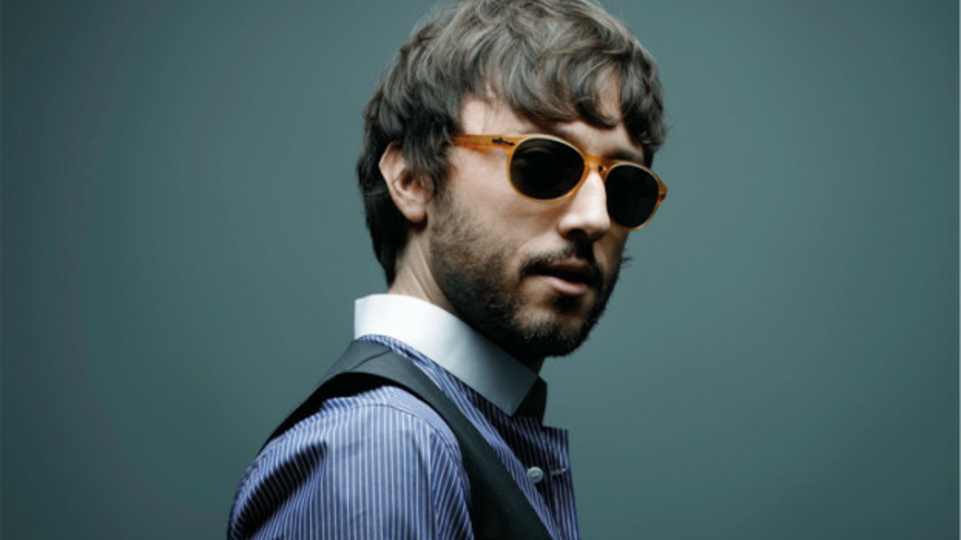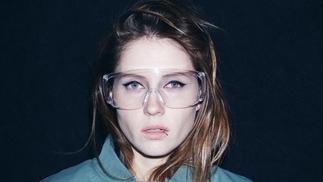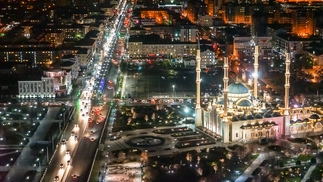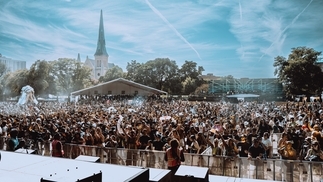60 SECONDS WITH... AGORIA
Agoria, aka Seb Devaud, talks cinema and beauty

French techno don Agoria makes gorgeous, evocative electronic music. With three beatific albums under his belt, he tells DJ Mag that he’s refined his way of working lately, not recording so many versions or layering so many different sounds onto his tracks, but it still means that more recent cuts like ‘Scala’ and ‘Les Violons Ivres’ are illuminated with beauty.
Seb is working on his new album, recording some vocals with Rodolphe Chabrier, the organiser of the acclaimed Transmusicales festival in Rennes, northern France. With Rodolphe operating as some kind of Jim Morrison-type shaman, the results should certainly prove interesting!
Agoria opened a club with his good friend Laurent Garnier, Le Sucre, in his home town of Lyon recently, although he now lives in Milan, Italy with his Italian girlfriend. He also helped establish the electronic music festival Nuits Sonores in Lyon a few years ago, and tells DJ Mag that film soundtracks — like the one he did for the Luc Besson-produced French film Go Fast a few years ago — remain a big ambition for him in his musical life...
Hi Seb, how’s it going? First of all, how did attending cinema school help you in your music productions?
“What I loved doing in cinema school was writing stories. I’ve never really been into the technical aspects of how a camera works, which light I’ll need exactly, what is the best treatment, doing the sound... I was much more into writing a synopsis, finding the good balance of a story, how to develop it to go to the right climax. In that way, it's very similar to making a tune — electronic music especially, because we can change everything in our music so easily.
“I guess also the fact of always finding new stories made me love experimenting, making so many different kinds of music. Maybe too much! But I can’t always make the same track... some artists are good at always doing the same kind of thing — they can be so precise. But I’m not like that, I would get easily bored. I can do either rough techno, vocal house or just classical arrangements with strings...
“Lots of fans tell me they recognise me anyway, which I find a real compliment. But I also understand that someone who loved ‘Scala’ might not love my next one if it's very different. During all these years I’m happy that I met many artists like Neneh Cherry, Tricky or Peter Murphy to name a few. They all inspired me a lot, opening new horizons. I think the audience is really into versatility too nowadays, if they feel it’s true.”
Why do you like to inject emotion and beauty into your productions?
“Thank you for saying there is beauty in my productions! I'm not sure it's a typical French thing, we all make very different kinds of music. I'm not sure we could compare my music to Daft Punk or Gesaffelstein.
“You know, it's funny because I love so much repetitive music, from Steve Reich to Jeff Mills, but my hero is Mark Ernestus. He's a legend and so different to every other artist I’ve met. He's the one who created Hardwax in Berlin, and obviously the one behind Basic Channel with Moritz Von Oswald.
“I love listening to repetitive music, I guess like all DJs, but when I'm in the studio I can't make it. I need to go somewhere else when I make my own repetitive loop. I need it to bring me somewhere else, and to develop it. I guess that's why many of my tracks are epic with breaks and melodies. Although I always try to keep what the listener will listen to as simple as possible, even if there are a lot of layers, even if there are main melodies like on ‘Les Violons Ivres’. I don't like minimal, but I like minimalism!”
With your FORMS show, how did you go about creating the visuals?
“If the last decade was about mixing all kinds of music together, this decade is more about mixing all kinds of arts. The project FORMS came from that idea, mixing filmography, architecture, visuals and of course music. After speaking with Jean Louis Brossard from the renowned festival Les Transmusicales during a little after-party, he said to me, ‘Seb, I really want you to play for my festival, can you bring us a special project, something you never did?’ We started to think about a concept, myself and my friends from the collective SCALE. At that time I didn't know that our project would tour a lot in many European festivals like Benicassim, Rock en Seine, Dour, etc... We planned it just for Les Transmusicales initially.
“With FORMS, the idea is to play everything live: visuals and music. But as I’m DJing, the tracklist changes every set, so that at every show we’re listening together to the music and we decide which image or scene goes to which tune. The fun comes from the fact that we are all playing live: Vincent, who does the visuals on the structure on stage, Joachim on the main screen, and me on the decks.”
What do the visuals add, why do you think they are important?
“I remember when I played after Oasis or New Order last summer, I could hear 20 or 30,000 people singing the songs. I started thinking, ‘Wait, I have no lyrics on my tunes that people can sing along to!’ I was really stressed, and felt so alone, I wasn't sure at all about the reaction of the audience! But after these shows, I can say that yes, the visuals are my chorus.
“In the indie festivals, the visuals help people that wouldn't have been into electronic music not think too much about the music I play. Then, step-by-step, they start dancing and shouting without paying attention that they were not supposed to like dance music! Obviously, when we perform FORMS in electronic festivals or rooms, it's so much more relaxing, as nobody expects choruses to sing! I’m really happy that this project has helped me to play in all kinds of festivals in front of very different kinds of audiences. It's really an exciting project.”
Have you ever thought about creating an intro track that replaces Duran Duran's 'Notorious' chant with “Agoria”?
“Hahaha, good one! It will be for my second life for sure, when I will make music under my alias Agoria Agoria.”





